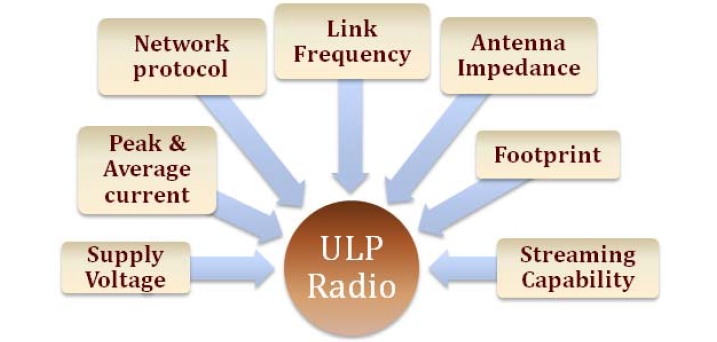For more information, see PR News
[sws_toggle1 title="PR NEWS">World-leading, 2 mA Low-power Consumption Enables Long Battery Life and Miniaturization
Microsemi Corporation (Nasdaq: MSCC), a leading provider of semiconductor solutions differentiated by power, security, reliability and performance, today announced the availability of a new ultra low power (ULP) radio frequency (RF) transceiver for short-range wireless applications where power consumption is of utmost importance.

Requirements for an Ultra-Low Power Radio Transceiver
The ZL70250 sets the bar in terms of low power consumption with only 2 milliamps (mA) of current required to transmit and receive data, enabling extremely long battery life and miniaturization.
These two features are particularly important for applications using energy harvesting and battery-powered wireless sensor networks
The new ULP radio operates in unlicensed frequency bands between 795 and 965 megahertz (MHz) and delivers a data rate of 186 kilobits per second (kbps) to support a wide variety of sensor applications.
All components are integrated into a single chip scale package (CSP) with the exception of a bias resistor and a supply decoupling capacitor.
Short-range sensor networks can be used for wireless communication in factories, industrial complexes and commercial buildings, where they improve manufacturing efficiency, safety, reliability, automation and security.
Applications include ambient/environmental monitoring, industrial building automation and security, access control, structural health monitoring, tank level monitoring, wireless cold chain tracking for pharmaceutical shipments, and flexible smart cards for embedded energy autonomous sensors, to name a few.
Miniaturization is also a key-enabling factor for applications where the weight as well as the size is a constraint.
Examples of industry segments that can benefit from an ultra compact wireless sensor include wireless wearable medical monitoring, wireless sensors for aircrafts or vehicles, and traceability tags.
Until recently, batteries such as AA cells have provided a powering solution, but replacing them when they run down can be expensive, especially when sensors are installed behind walls or in other unreachable locations.
With the growth in wireless sensor networks, designers need innovative solutions that can be used in miniaturized, ultra compact sensors using small coin cell batteries.
Due to the ZL70250 radio's low peak current and voltage supply (1.1V to 1.9V) system vendors developing low power sensor nodes can target a variety of short-range wireless sensor networks across several industry segments.
With its 2 mm x 3 mm die size the ZL70250 CSP can be integrated together with other compact integrated circuits in multi-chip modules (MCM).
"Our ULP radio solution consumes the least amount of energy per transmitted bit in the market today and is essential in wireless sensor designs using energy harvesting transducers," said Mauricio Peres, director of business development of Microsemi's ULP group.
"In addition, in applications utilizing compact batteries, our lead customers have reported outstanding power saving capabilities when using compact coin cell batteries with 1.4V and 1.5V supply."
Many wireless solutions available today in the medical industry have limitations to battery life when transporting multiple vital sign streams to a display instrument. Continuous vital sign monitoring applications such as electro cardiogram (ECG) rhythm or blood oxygen level (pulse oximetry) tracking can drain the battery supply quickly to an operating duration of one day or less.
The ultra low power capabilities of the ZL70250 radio differentiate in sensor applications where battery life must be preserved while monitoring real time continuous data events.
Current lab trials at Microsemi using CR-2032 coin cells show a significant improvement to battery life in continuous patient monitoring applications such as wireless ECG and pulse oximetry when compared to existing off the shelf solutions using AA batteries.
Key short range, miniaturized wireless applications for ZL70250 CSP radio include:
- Smart "thin" card based sensors
- Ambient monitoring
- Building automation and home security
- Indoor live stock monitoring
- Medical wearable sensors with continuous monitoring
- Animal lab sciences
- Package transport tracking sensors (e.g. pharmaceutical)
- ULP sensor networks for naval or commercial avionics applications
- Military sensors for modern soldiers
- Compact sensors based on rechargeable solid state thin film battery
Microsemiis providing development support tools for the ZL70250 CSP solution. Included in the tools are Application Development Kits (ADK), a low power wireless communication software code starter for point to point connections and reference designs of wireless sensors based on CR-2032 coin cell batteries.[/sws_toggle1] (iTers News)

